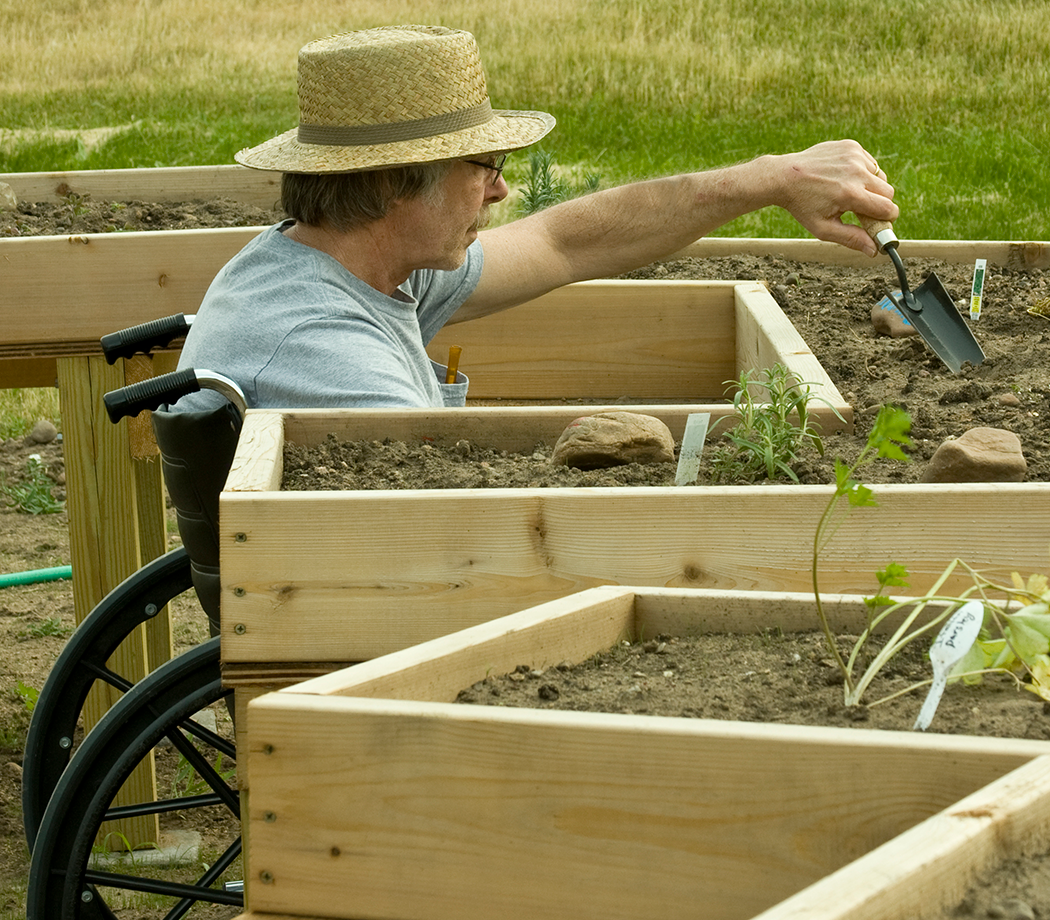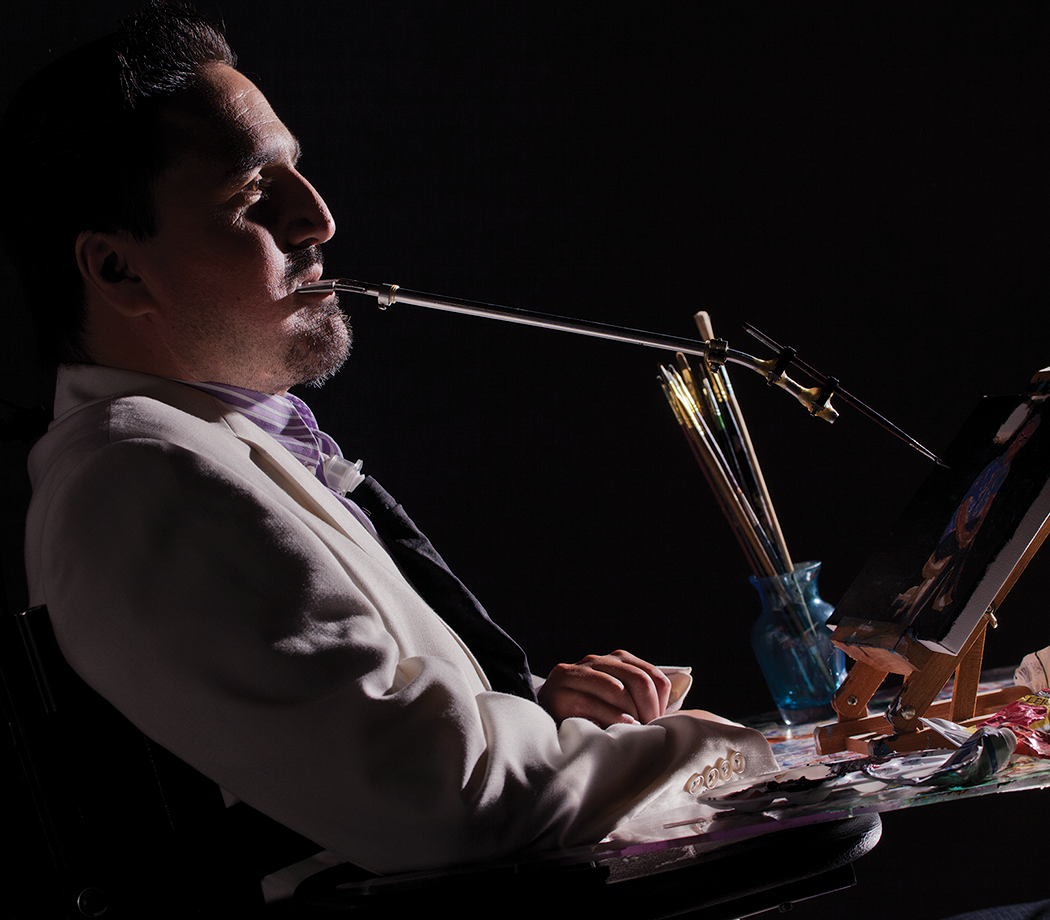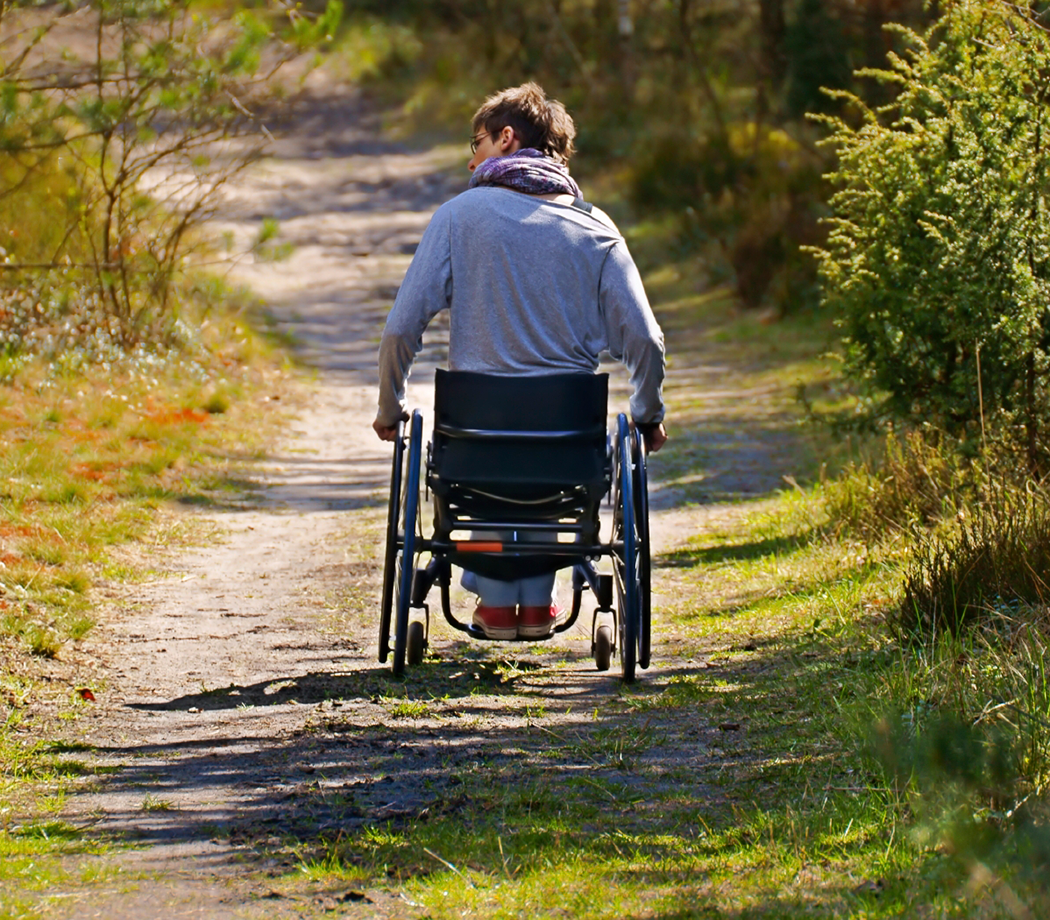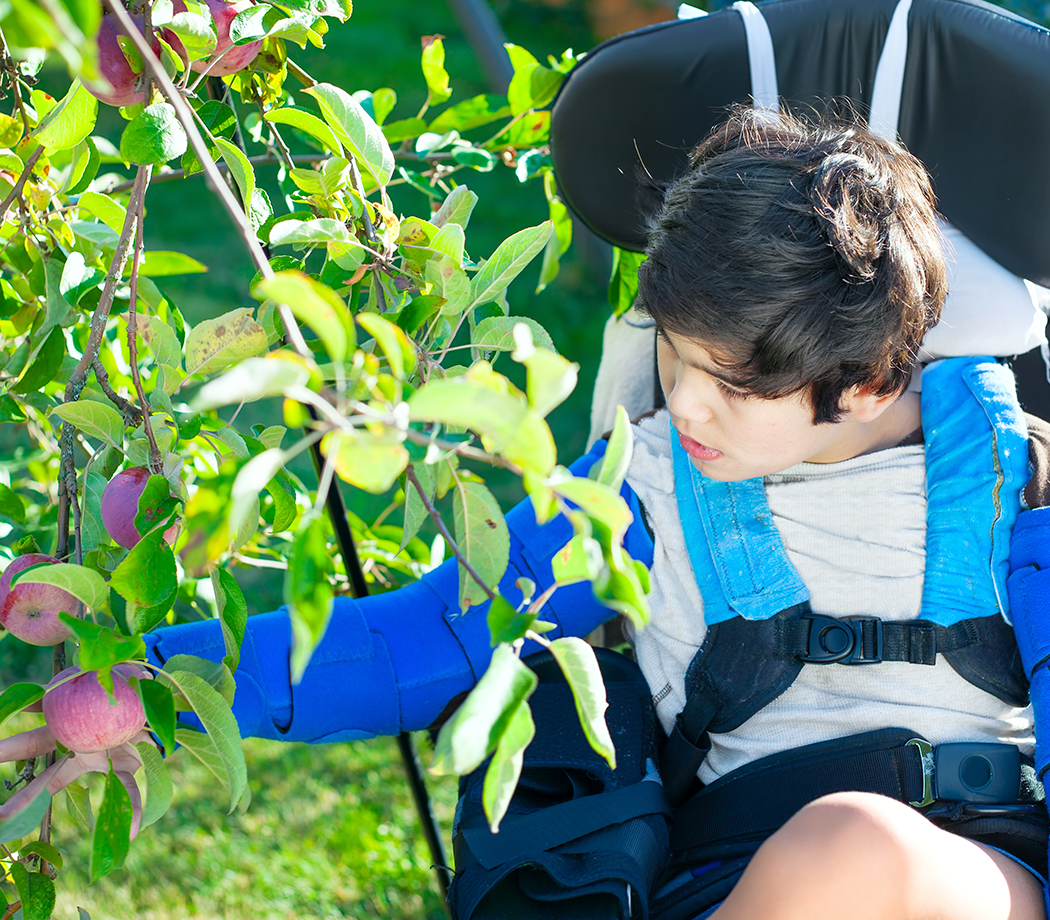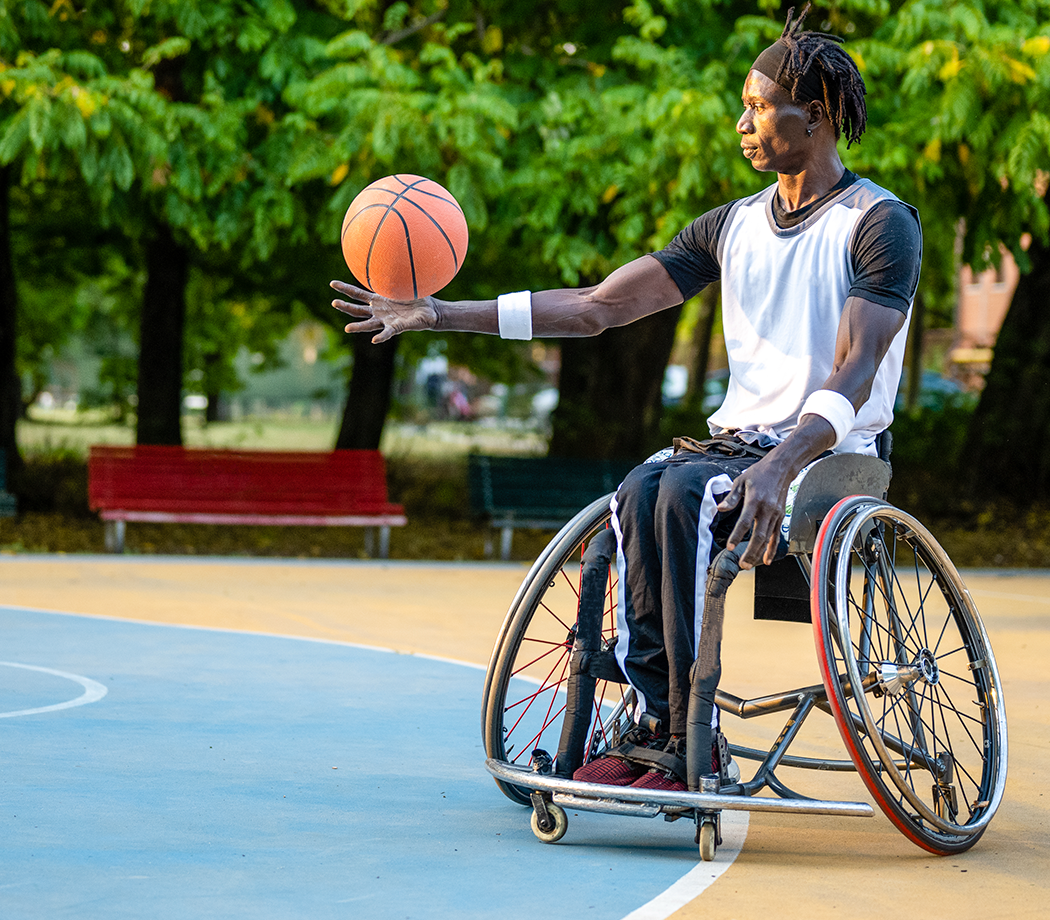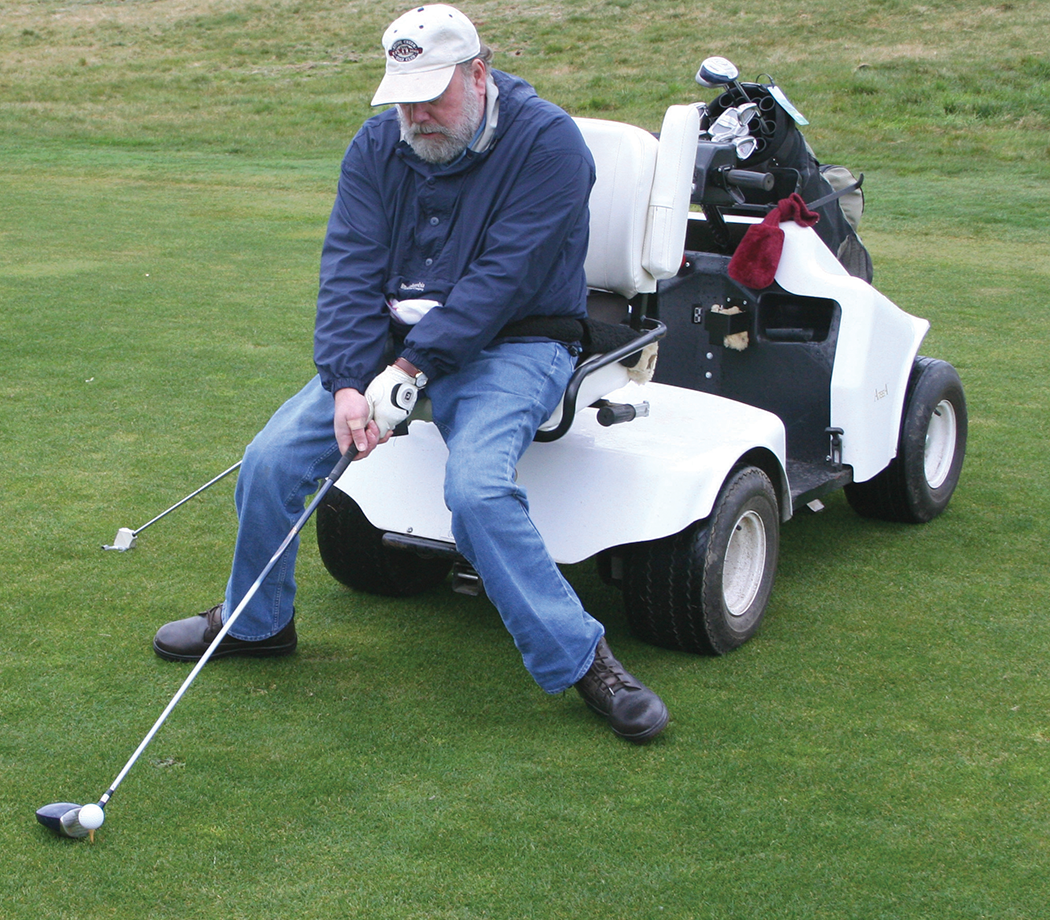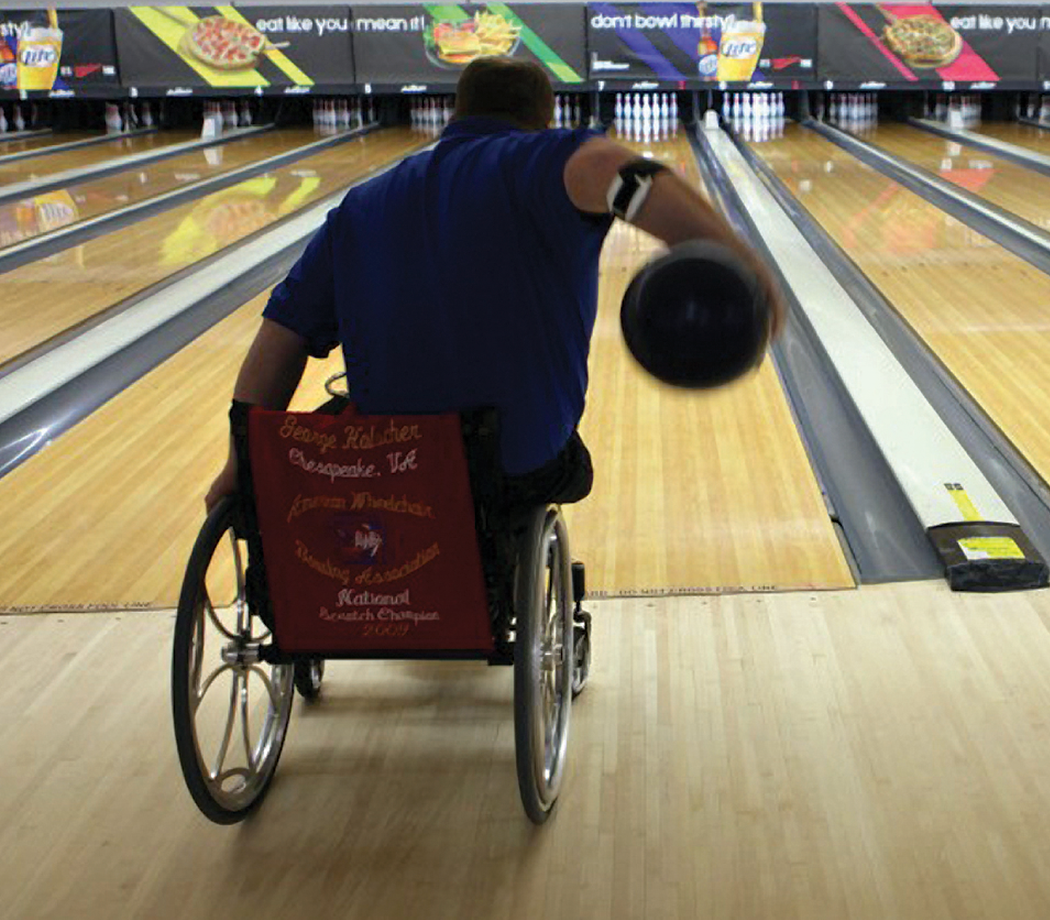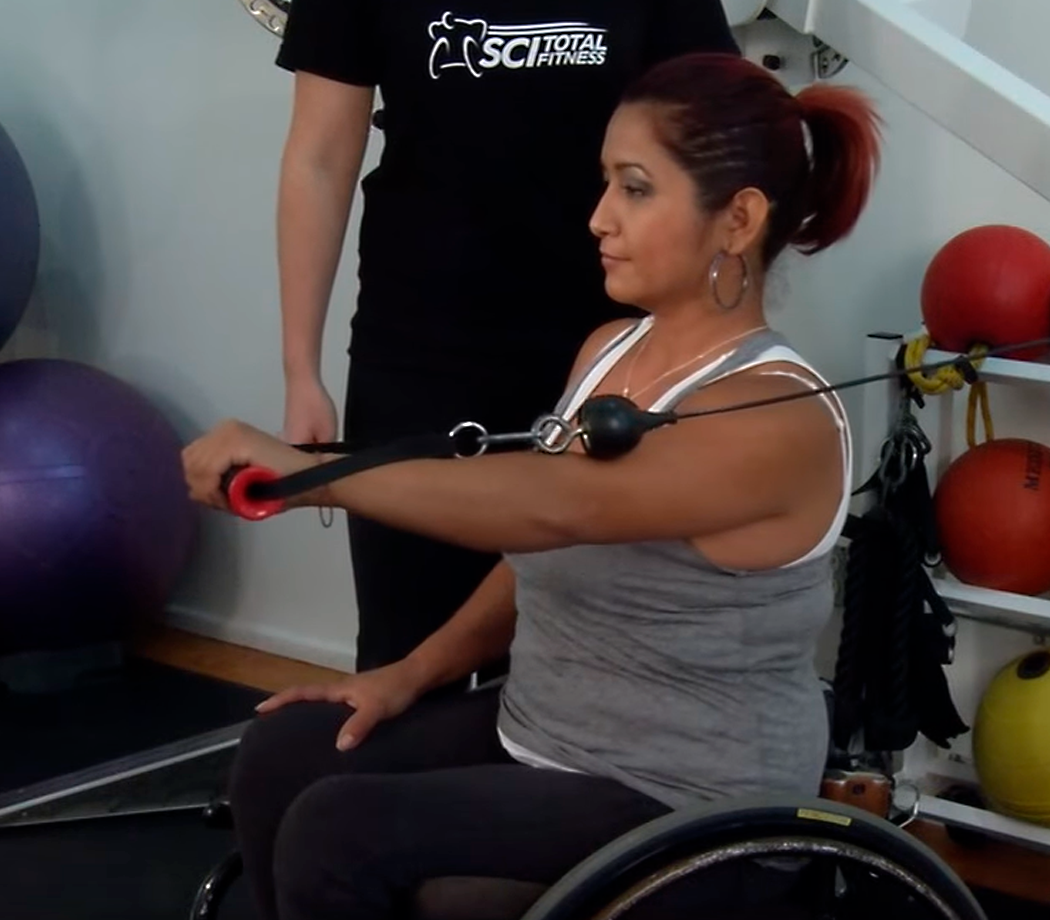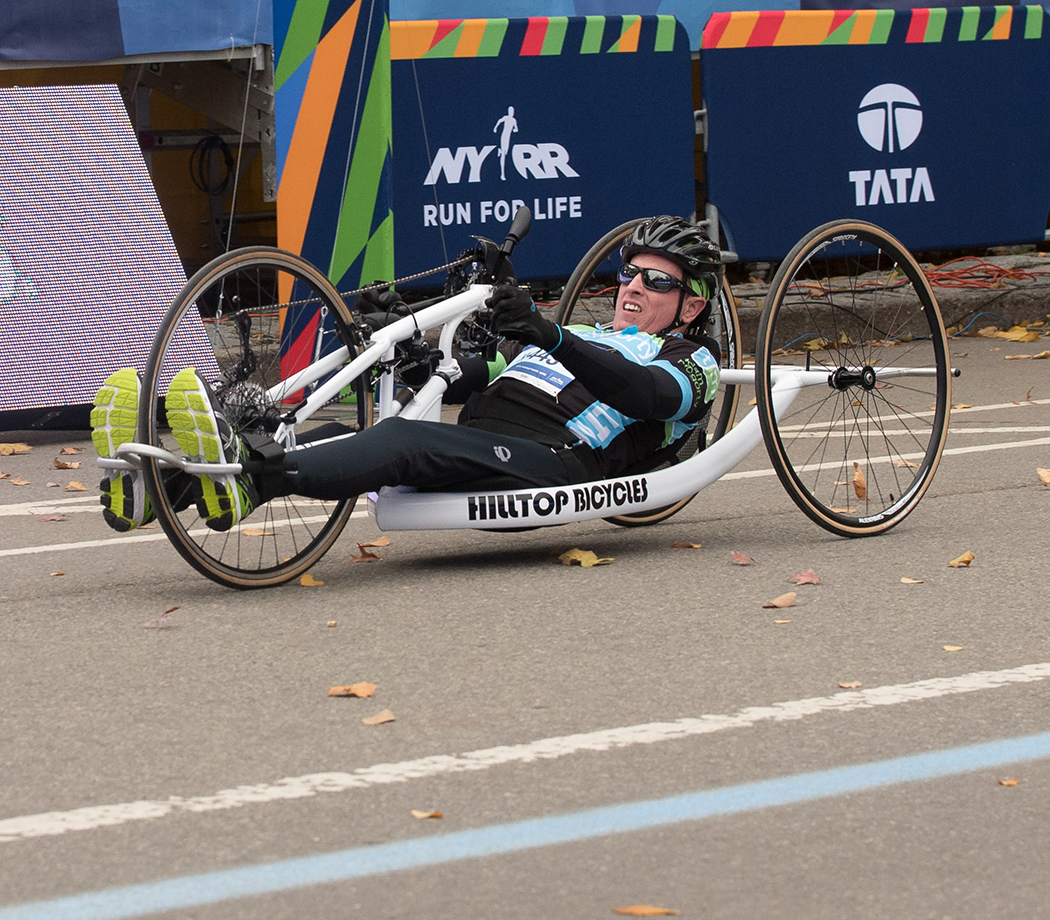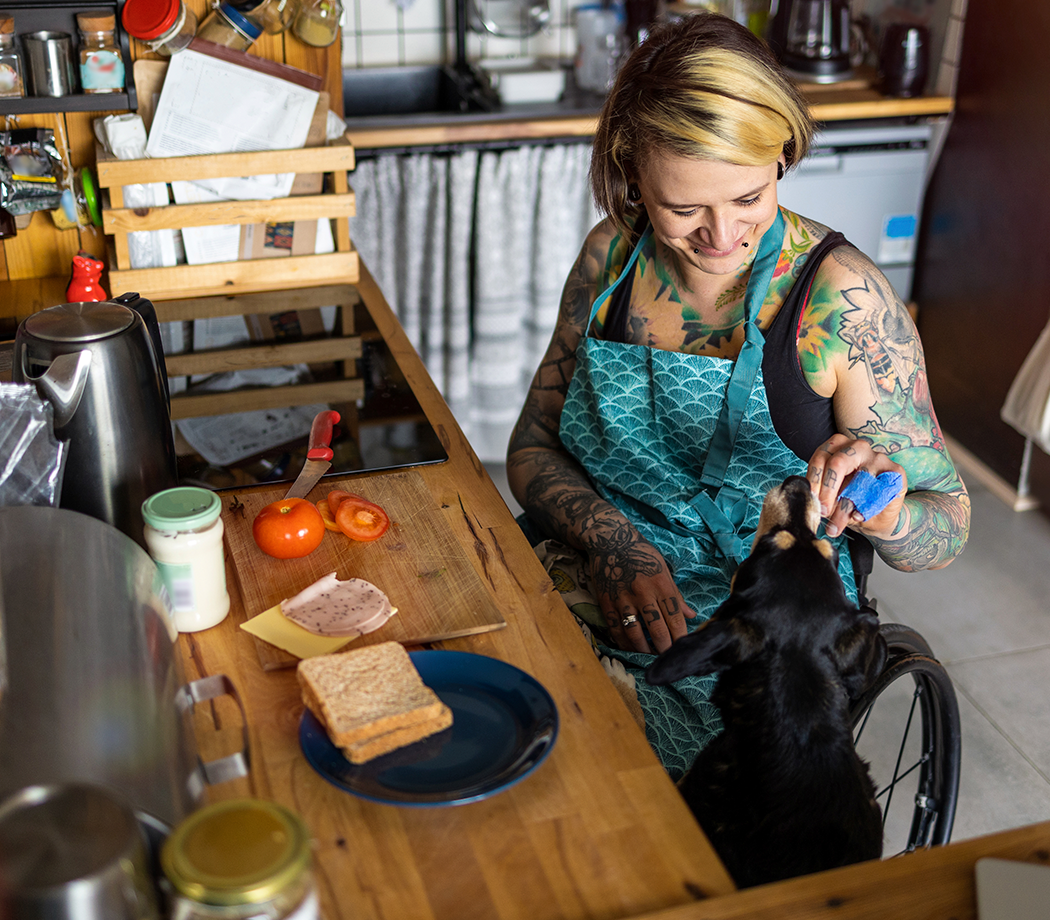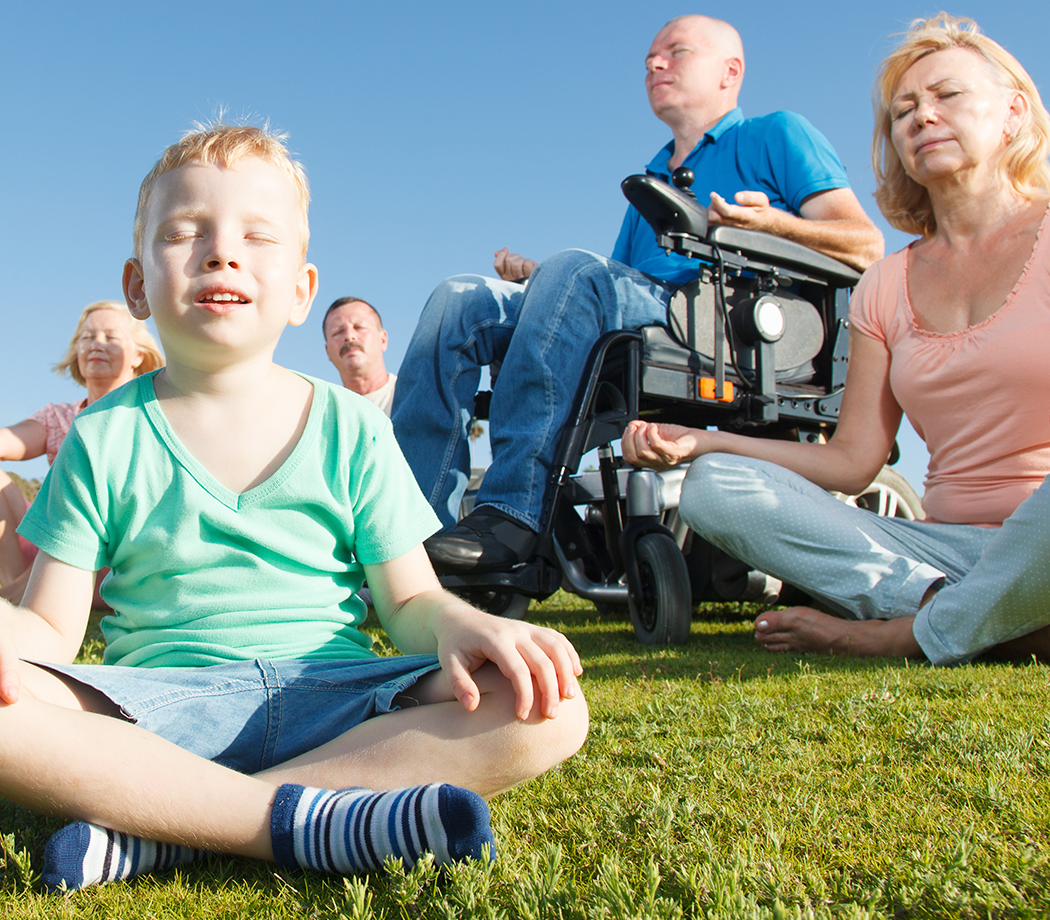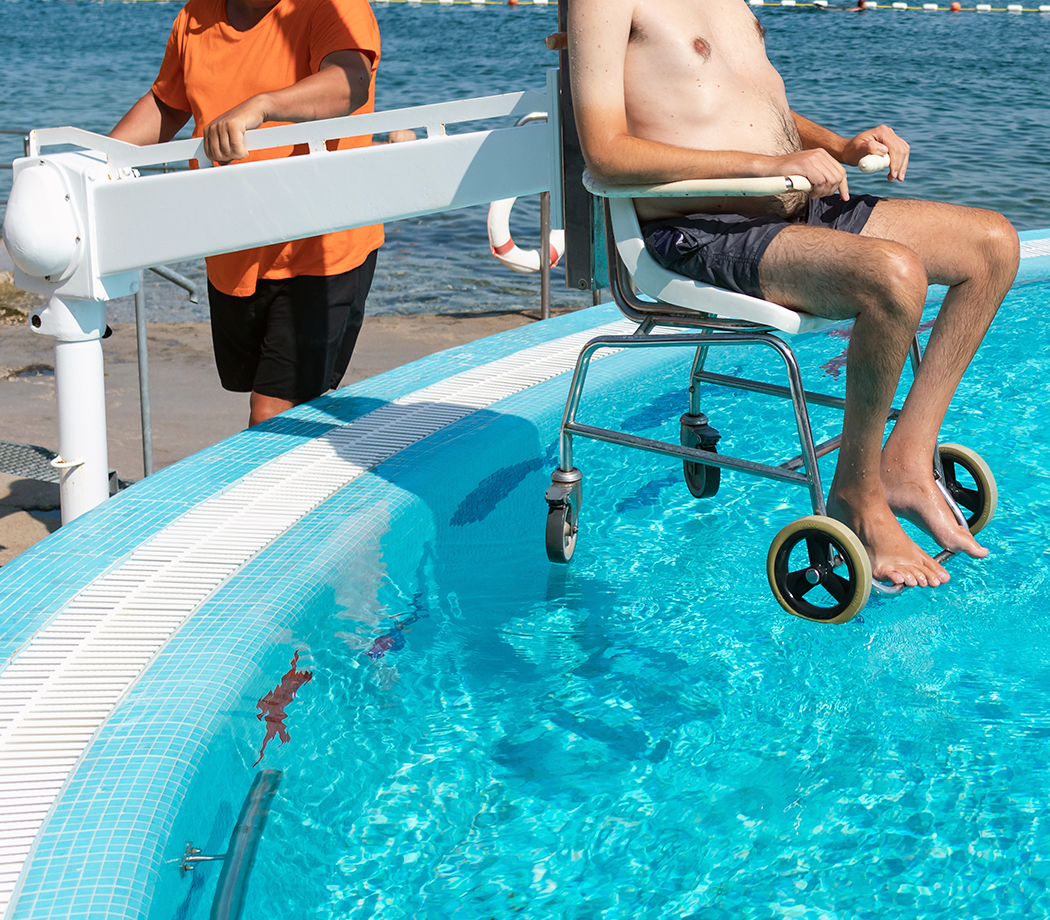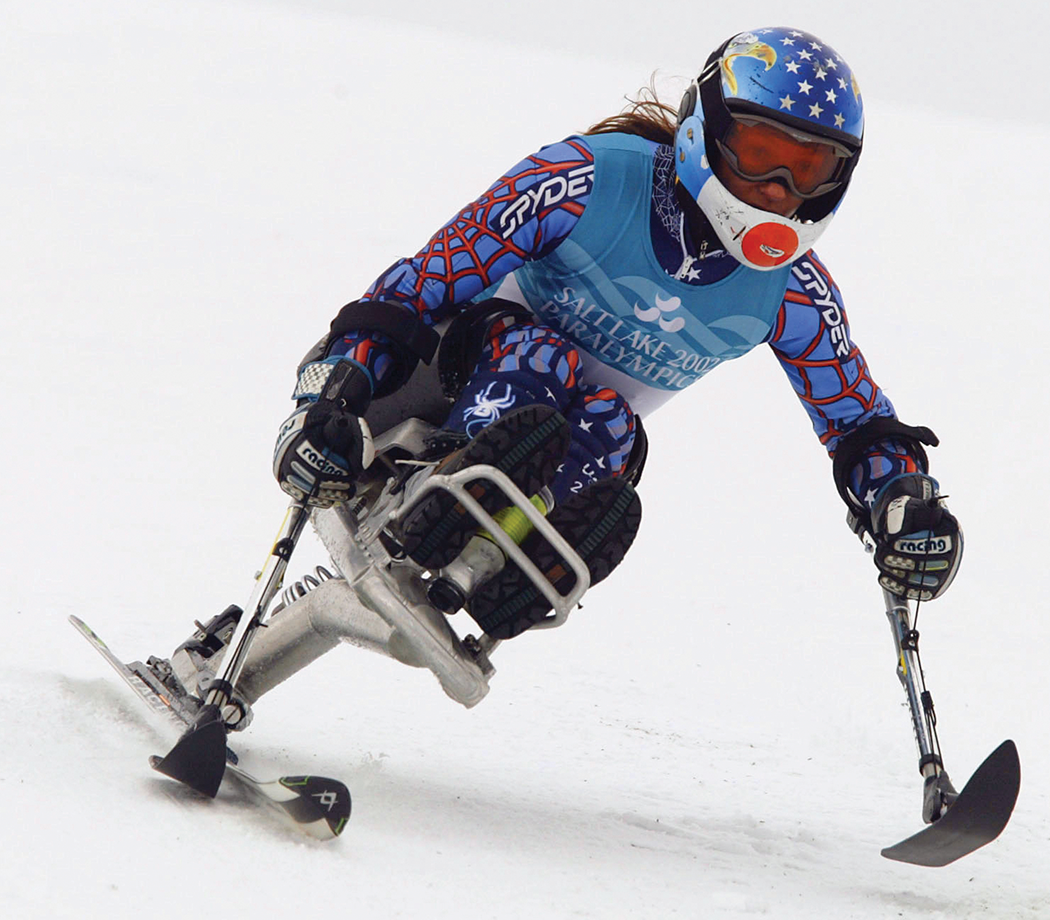Winter Sports
During the Paralympic Games, competitive athletes take the stage and compete in alpine skiing, cross country skiing, wheelchair curling, ice sledge hockey, and a biathlon (a combination of cross-country skiing and rifle shooting). Whether it is recreationally or competitively, winter sports, like skiing, luge and sled hockey, offer fun and active lifestyles for everyone.
Athletes and Their Mobility
The first question you may want answered is: ‘Can I participate with my level of injury?’ “Our rule of thumb for the most part,” explains Michael Zuckerman, Executive Director of Wintergreen Adaptive Sports in Virginia (Quality of Life grant recipient), “is you need to know where you are, and that you want to go skiing! And we can provide the rest!”
Different forms of skiing are available for both people living with paraplegia and quadriplegia.
Angela Neilson of the New England Handicapped Sports Association (NEHSA) stresses that the level of sit-skiing one partakes in “depends on mobility.”
Sit-skiers will sit in an open, container-like seat or bucket, while on the slopes. “Mono skiers are usually individual skiers,” explains Neilson. “They have one ski underneath their bucket, and don’t need anyone helping. Bi-skiers have two skis underneath their bucket and do need assistance, someone standing behind them.”
Overall, NEHSA, also a Quality of Life grantee, has approximately 2/3 paraplegics and 1/3 quadriplegics in their program of 700 members and 268 volunteers. “Typically, people living with paraplegia have good upper body strength and are mono skiers,” Neilson explains, “and people living with quadriplegia are 100% hands on,” having someone else assist them.
Zuckerman stresses that snow sports depend a great deal on the individual and their physical fitness. “Great abs gives an advantage,” explains Zuckerman, “good strong arms and being able to balance forward or side-to-side while sitting.”
Curt Carroll on Taking up Sit-Skiing
Hitting the Slopes
Neal Williams, a member of NEHSA from Maine, whose back was crushed in seven places after serving in Vietnam, is a bi-skier.Williams, 60, was volunteering at the 2002 Paralympics in Salt Lake City, Utah when Lacey Heward, a bronze medalist paralympian, encouraged Williams to become involved in adaptive skiing.
Williams, who was never very active in sports, says skiing gave him “a new lease on life.”
“I can’t begin to tell you what a difference it has made in my life,” says Williams, who hits the slopes as often as possible. “The sense of freedom is incredible.”
Linda Small, also a member of NEHSA, was 17-years-old when she was injured in 1973. She was thrown from a vehicle, crushing her T11 and T12 vertebra leaving her paralyzed from the waist down. Small wore a back brace for six years and in 1979 had a spinal fusion using a rib to fuse T10 through L2.
Now a mono-skier, Small never thought she would be able to ski on her own. “It makes you feel like you’re flying, open and free,” says Small. “I may need help getting into the equipment, but once I’m ready, I’m just like everyone else, and don’t feel disabled. When you think about it, most sports can be adapted for the disabled in order for us to be involved with our family and friends. There are challenges for the able-bodied as well as the disabled.”
Loving the Luge
Luge is another sport for recreational athletes to try. In a luge sled, the participant reclines face up and has his or her legs between the runners.
Tom Hernon, 46, T10 incomplete, was paralyzed from the waist down after a dirt biking accident in 1997. A skier and luge athlete, Hernon on uses his upper body to steer the luge sled. “You use the pressure of the opposite shoulder of the way you’re going,” says Hernon.
“Your whole lower body is perfectly still,” explains Hernon, who has been participating in luge since 2002 and became the first adaptive luge athlete in 2003 – placing 4th in the Utah Winter Games racing against able-bodied athletes that year.
Hernon, who skis at the Muskegon Winter Sports Complex at Muskegon State Park in Michigan, a Quality of Life Grant recipient, encourages younger participants to try out the luge. “The better you get, the easier it is,” says Hernon.
Sliding in Sled Hockey
Bill Hannigan, was paralyzed when he was 24 from the chest down with a T3 spinal cord injury in a motorcycle accident.
One year after his injury, Hannigan was attending a New York Rangers NHL hockey game when he was approached about playing sled hockey (also known as sledge hockey). Though he wasn’t entirely sure of how to play hockey in a wheelchair at first, Hannigan, who plays in the Northeast Sled Hockey League for the New York Rangers, says, “All of a sudden you get your first check and think, ‘Wow, that’s great!'”
Sled hockey itself is played in three, 15-minute running time periods, and most of the same rules apply that are in professional hockey. “It’s full contact,” explains Hannigan. “There’s icing, offsides, two-minute power plays, fighting, and it’s hard hitting. You can’t purposely run your sled into someone else’s. You try to hit shoulder to shoulder.” Sled hockey players sit in a sled low to the ice with two blades mounted under the seat.
The equipment is also similar as players wear shin, shoulder, and elbow pads, along with a full face mask. Sled hockey players hold two hockey sticks while playing. “You have two sticks with metal plates at the end that curve,” explains Hannigan. “One curves to the right, the other to the left.” The other end of the stick digs right into the ice in order for players to propel themselves.
“There’s so much more to adaptive sports,” says Hannigan, “and the aspect of quality of life. When I go out with the sled hockey guys, it just makes me comfortable with who I am. There is camaraderie that comes from playing, learning, and traveling.”
Warm Clothes for Cold Weather
While skiers Neal Williams and Linda Small both feel free when on the slopes, they are cautious of what to wear in the cold weather. “It’s different according to the day,” explains Williams. “It varies greatly according to the ambient temperature. You control it with layers.”
On a 20-degree day, Williams will wear three layers of fleece, (shirt, vest, and jacket), Gortex jacket, and polypropylene pants. In addition to always skiing with helmets, Williams and Small pay particular attention to their hands and feet. Williams will wear fleece socks and sometimes insulated booties.
“My left foot has less circulation than the right,” says Small, “so it is usually cold, clammy and more puffy daily. I was always afraid to use toe warmers in my boots, because where I have no feeling I was afraid to get burned, but there are other disabled skier who use them. My feet get cold but I have never gotten frost bite.”
Small uses hand warmers with her Gortex gloves. “The instructors usually don’t take us out if the temperature is below ten degrees for frostbite reasons,” explains Small. “They know how cold they are, and where on our bodies we have no sensitivity to the cold. They won’t take the chance.”
Candace Cable on Suitable Clothing for Sit-skiing
Candace Cable on Cross Country Sit-skiing
Snow Sports and Self-esteem
Scott Franssen, Development Director for the National Sports Center for the Disabled (NSCD) in Winter Park, Colorado, focuses not only on the mobility of the recreational athletes, but also the impact winter sports has on one’s self-esteem.
“We set goals, go through the day, review, and have logs or record their development,” explains Franssen.
The NSCD, founded in 1970 and a two-time Quality of Life Grant recipient of the Reeve Foundation, focuses on the participant’s strengths, balance skills, core strength, building self-esteem, and changing self-image.
Michael Zuckerman of Wintergreen Adaptive Sports says, “The sports can be life transforming, powerful. Being out there with their families, the wind in their face, the sun in their eyes, they’re loving life.”
“We’ve all been dealt a hand,” says Zuckerman, “some reshuffled. Those who play their best hand will come ski and snowboard with us.”

